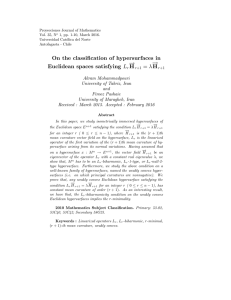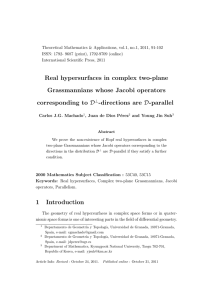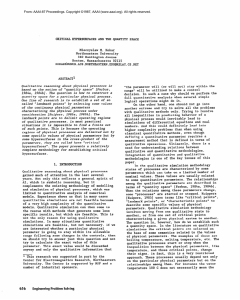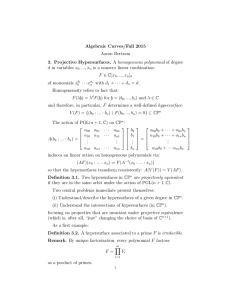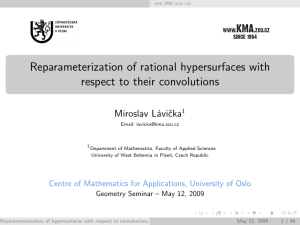TUBE FORMULA, BEREZINIANS, AND DWORK FORMULA HOVHANNES M. KHUDAVERDIAN
advertisement
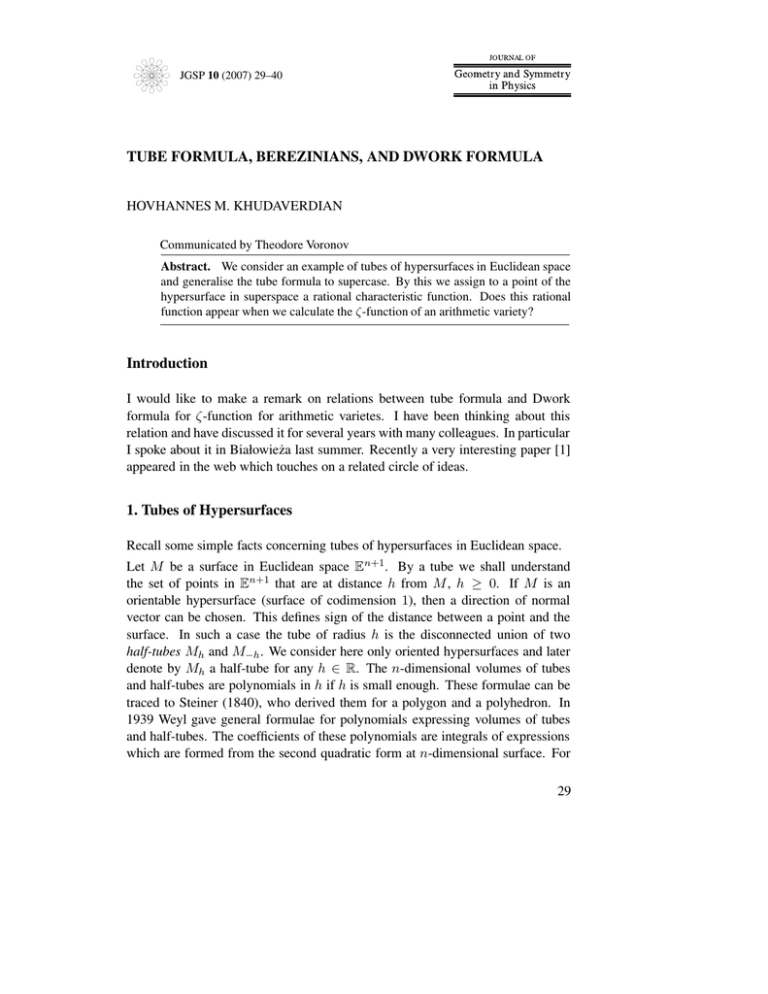
JGSP 10 (2007) 29–40 TUBE FORMULA, BEREZINIANS, AND DWORK FORMULA HOVHANNES M. KHUDAVERDIAN Communicated by Theodore Voronov Abstract. We consider an example of tubes of hypersurfaces in Euclidean space and generalise the tube formula to supercase. By this we assign to a point of the hypersurface in superspace a rational characteristic function. Does this rational function appear when we calculate the ζ-function of an arithmetic variety? Introduction I would like to make a remark on relations between tube formula and Dwork formula for ζ-function for arithmetic varietes. I have been thinking about this relation and have discussed it for several years with many colleagues. In particular I spoke about it in Białowieża last summer. Recently a very interesting paper [1] appeared in the web which touches on a related circle of ideas. 1. Tubes of Hypersurfaces Recall some simple facts concerning tubes of hypersurfaces in Euclidean space. Let M be a surface in Euclidean space E n+1 . By a tube we shall understand the set of points in En+1 that are at distance h from M , h ≥ 0. If M is an orientable hypersurface (surface of codimension 1), then a direction of normal vector can be chosen. This defines sign of the distance between a point and the surface. In such a case the tube of radius h is the disconnected union of two half-tubes Mh and M−h . We consider here only oriented hypersurfaces and later denote by Mh a half-tube for any h ∈ R. The n-dimensional volumes of tubes and half-tubes are polynomials in h if h is small enough. These formulae can be traced to Steiner (1840), who derived them for a polygon and a polyhedron. In 1939 Weyl gave general formulae for polynomials expressing volumes of tubes and half-tubes. The coefficients of these polynomials are integrals of expressions which are formed from the second quadratic form at n-dimensional surface. For 29






